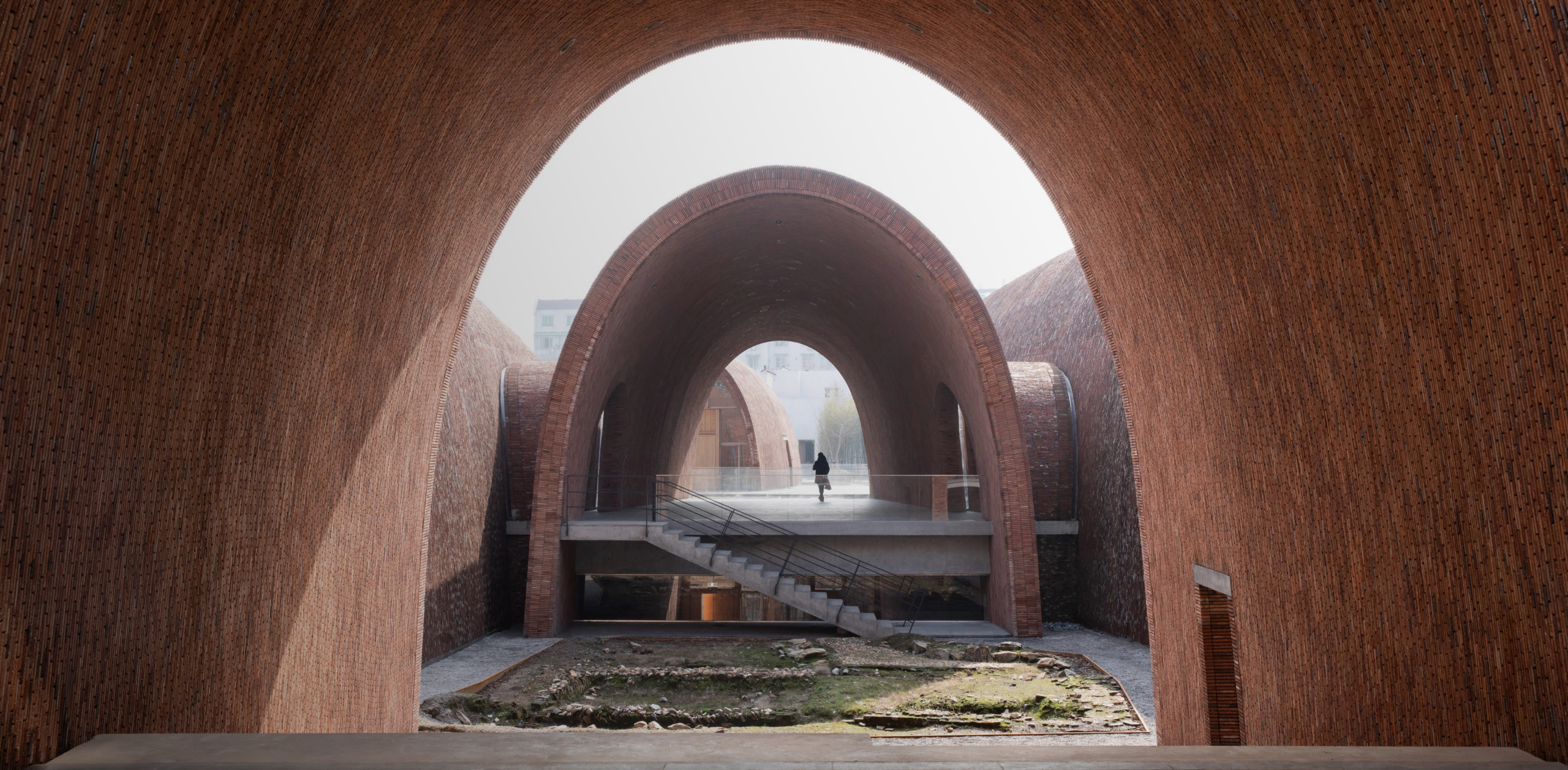Architects: Want to have your project featured? Showcase your work through Architizer and sign up for our inspirational newsletters.
Architectures are not always firm and solid, and can be temporary whilst still meaningful. This collection features 8 urban pop-ups that, when standing, refreshed everyday urban scenes and inspired new forms of communications between people and their cities. These temporary pavilions are usually fast to construct and dismantle, occupying a small piece of spare land in the cities.
Unlike public art installations, pavilions are usually spaces designed to be approached and walked through. Meanwhile, functions of these spaces can be simple: a sheltered place for gathering, a temporary gallery or a small stage. Beyond the simplicity, they evoke feelings and thoughts that are simultaneously more straightforward and open-ended than permanent buildings. They are fireworks that bloom only for moments, leaving their voices and messages to echo.

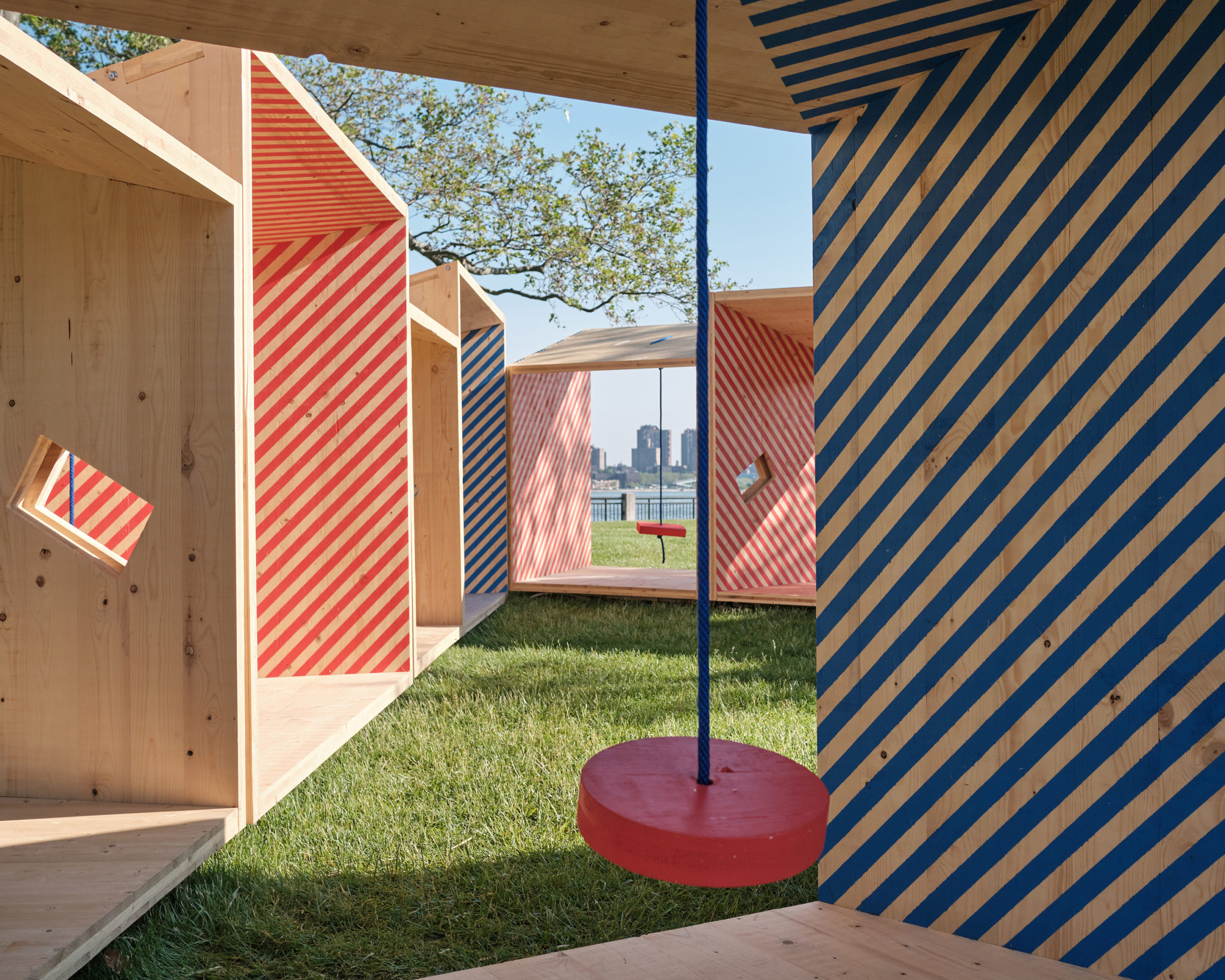 Salvage Swings by Somewhere Studio, New York, NY, United States
Salvage Swings by Somewhere Studio, New York, NY, United States
Salvage Swings presented a possible way to utilize construction wastes. Initially sited on Roosevelt Island, the installation comprised twelve repetitive CLT modules recomposed from the shipping palettes used in the construction of a student residence hall.
The pieces left by the cut-outs became swing seats hanging on each module, transforming them into occupy-able spaces for relaxation. In different iterations, the design was arranged differently so that the modules formed public spaces of various shapes and functions. Prefabricated as flat panels with finger joints, the design ensured fast assembly on-site within a few days.

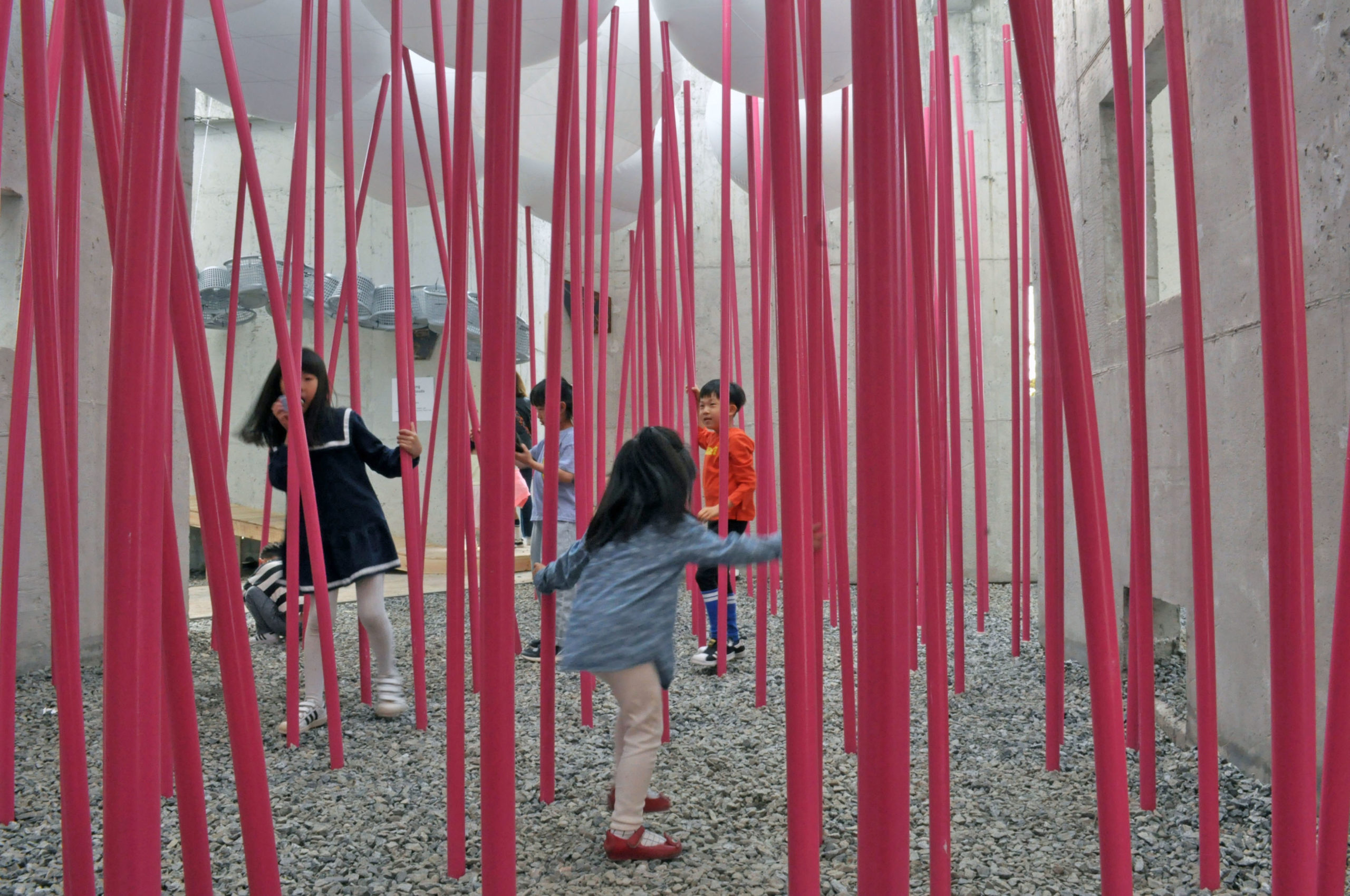 Cloud Forests: Pavilion for Children’s Play by UNITEDLAB Associates LLC, Hwaseong-si, South Korea
Cloud Forests: Pavilion for Children’s Play by UNITEDLAB Associates LLC, Hwaseong-si, South Korea
This pavilion is located in an abandoned museum which was revived the surrounding town, turning it into a popular tourist attraction. The project was commissioned as a community space for all generations in the local community. Comprising flexible bars and balloons, the whole installation was reactive; any movement of a bar would be transferred to the balloon on top, reverberating further to other, adjacent balloons and bars. The density of bars varied, allowing spaces for children to actively interact with the bars while also leaving more spacious areas where parents could supervise their children.
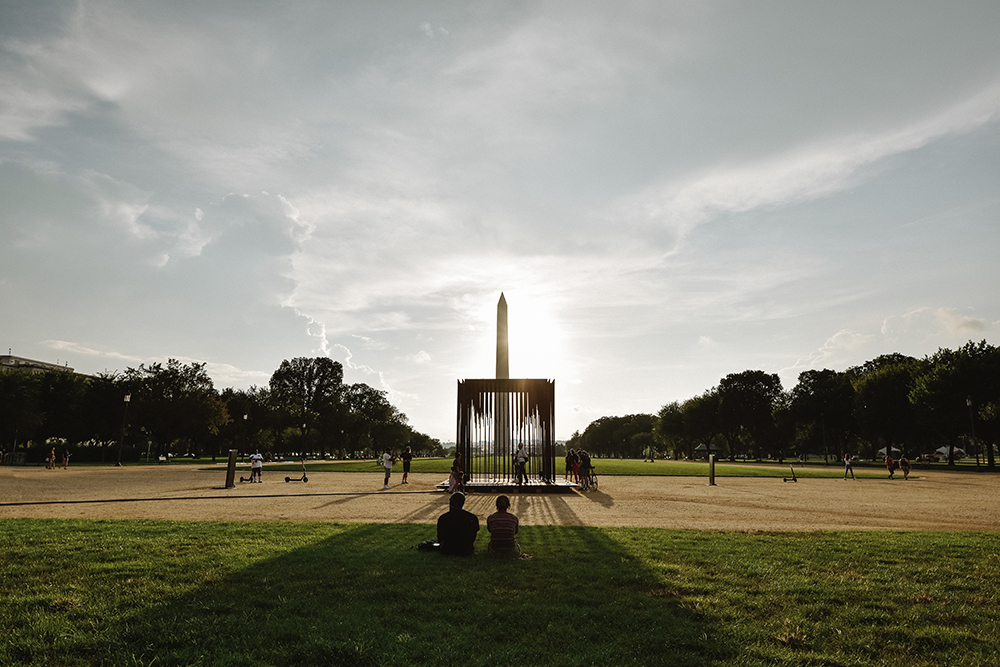
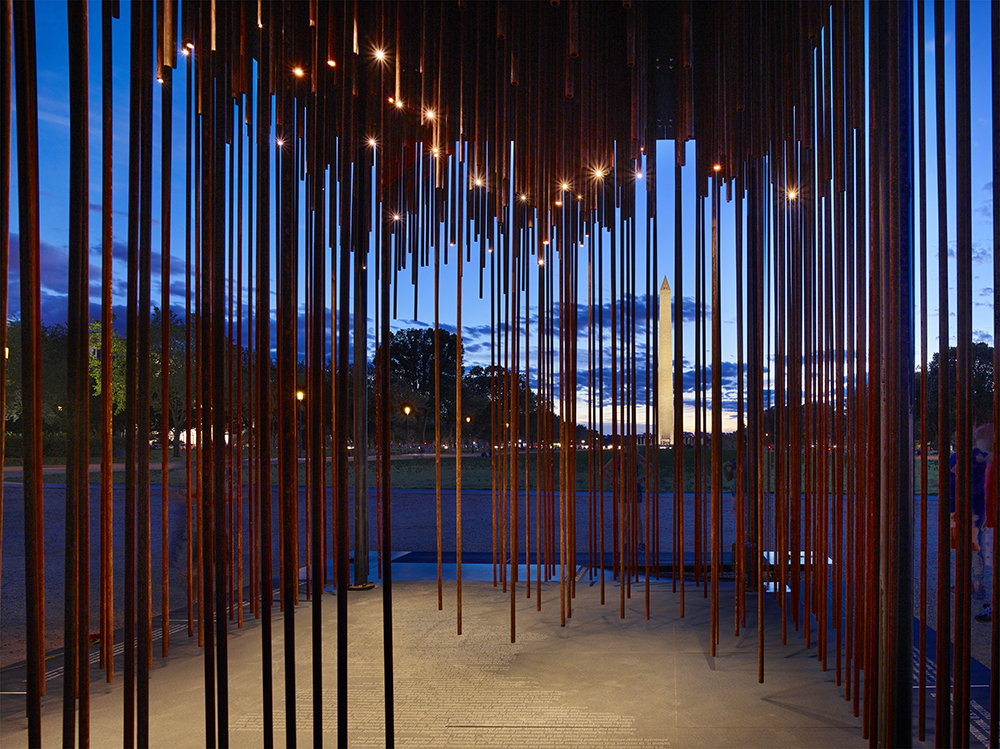 Society’s Cage by SmithGroup, Washington, DC, United States
Society’s Cage by SmithGroup, Washington, DC, United States
Born in the aftermath of the George Floyd and Breonna Taylor murders, Society’s Cage was a sheltered memorial where people could remember and reflect. Line charts representing four sets of data were projected onto the vertical sides of the “cage.” Each data set showed changes in the numbers of death caused by a certain type of institutional racism against black people in the U.S. The pavilion sit primarily on the National Mall in March 2020. It later travelled to Maryland and Oklahoma and will continue its tour to spread the message.
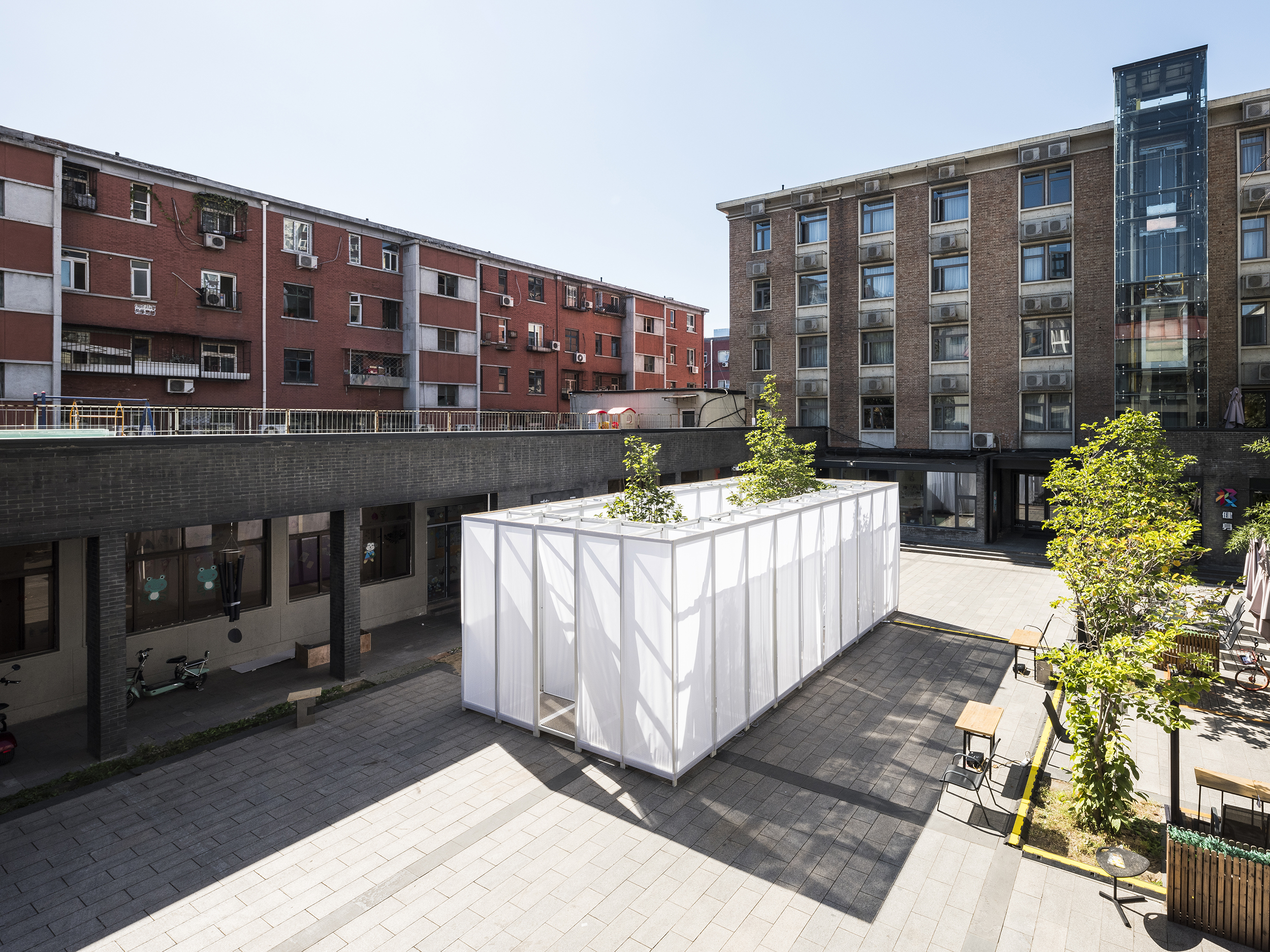
 CO2 by Superimpose Architecture, Beijing, China
CO2 by Superimpose Architecture, Beijing, China
Sited within the tight urban contexts of Chaoyang, Beijing, CO2 offered an escape from the urban chaos. The pavilion traced a new courtyard inside the middle of another courtyard. The inner courtyard provided a meditation space with only trees and a framed sky clear of buildings from sight. Between the two courtyards was a looped corridor that acted as a transition. The white textiles were the boundaries between the courtyards as well as the projection screen for a series of events in the 10th Beijing Design Week.
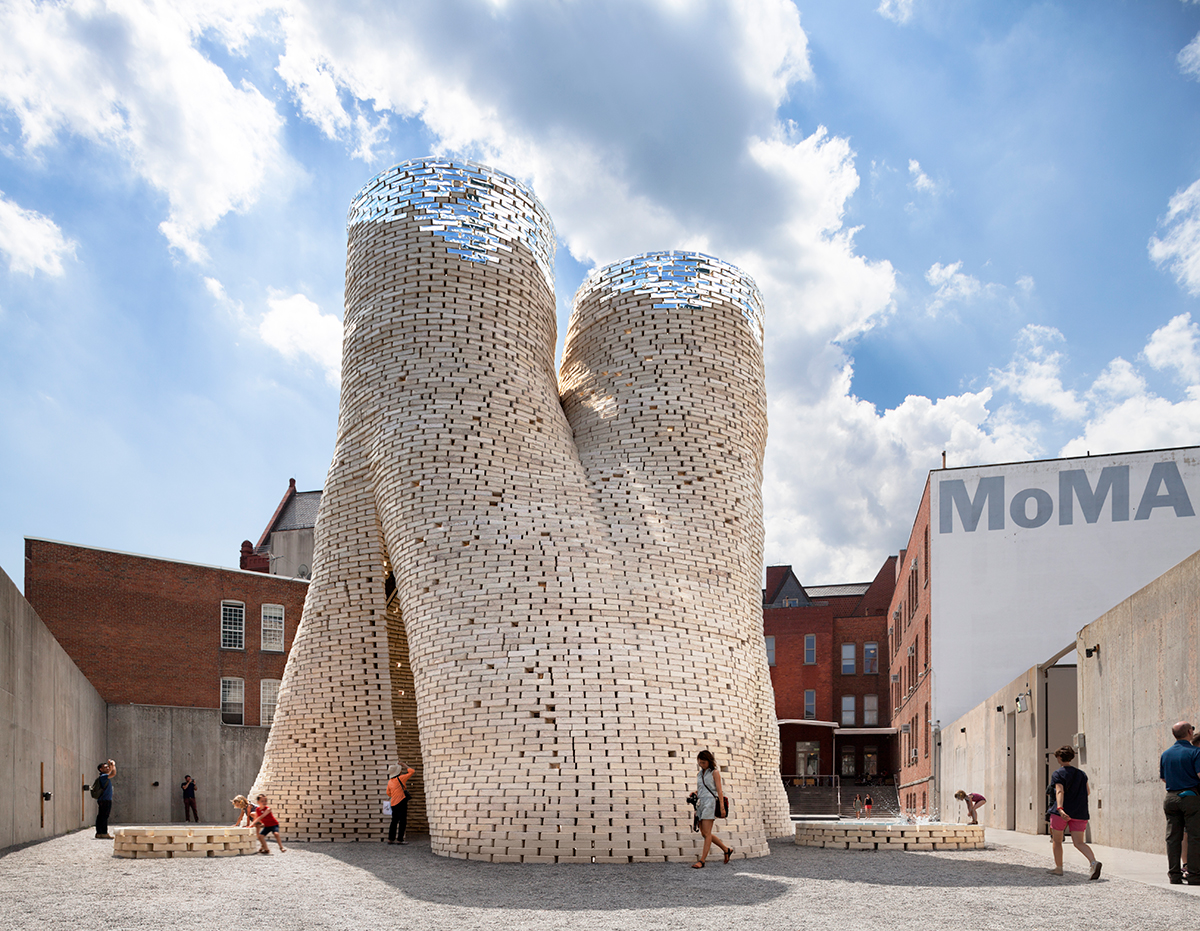
 Hy-Fi by The Living, New York, NY, United States
Hy-Fi by The Living, New York, NY, United States
Commissioned by the Museum of Modern Art (MoMA) and MoMA PS1, Hy-Fi demonstrated a new model of sustainable architecture. The bricks made of corn stalk wastes and mushrooms could be 100% grown to solid in five days and subsequently decomposed into gardening soil. The circular structure of Hy-Fi was therefore part of the natural carbon cycle that required no additional energy for construction and dismantling. All raw materials were sourced within 200 kilometers of the site to minimize energy cost and carbon emission by material transportations.
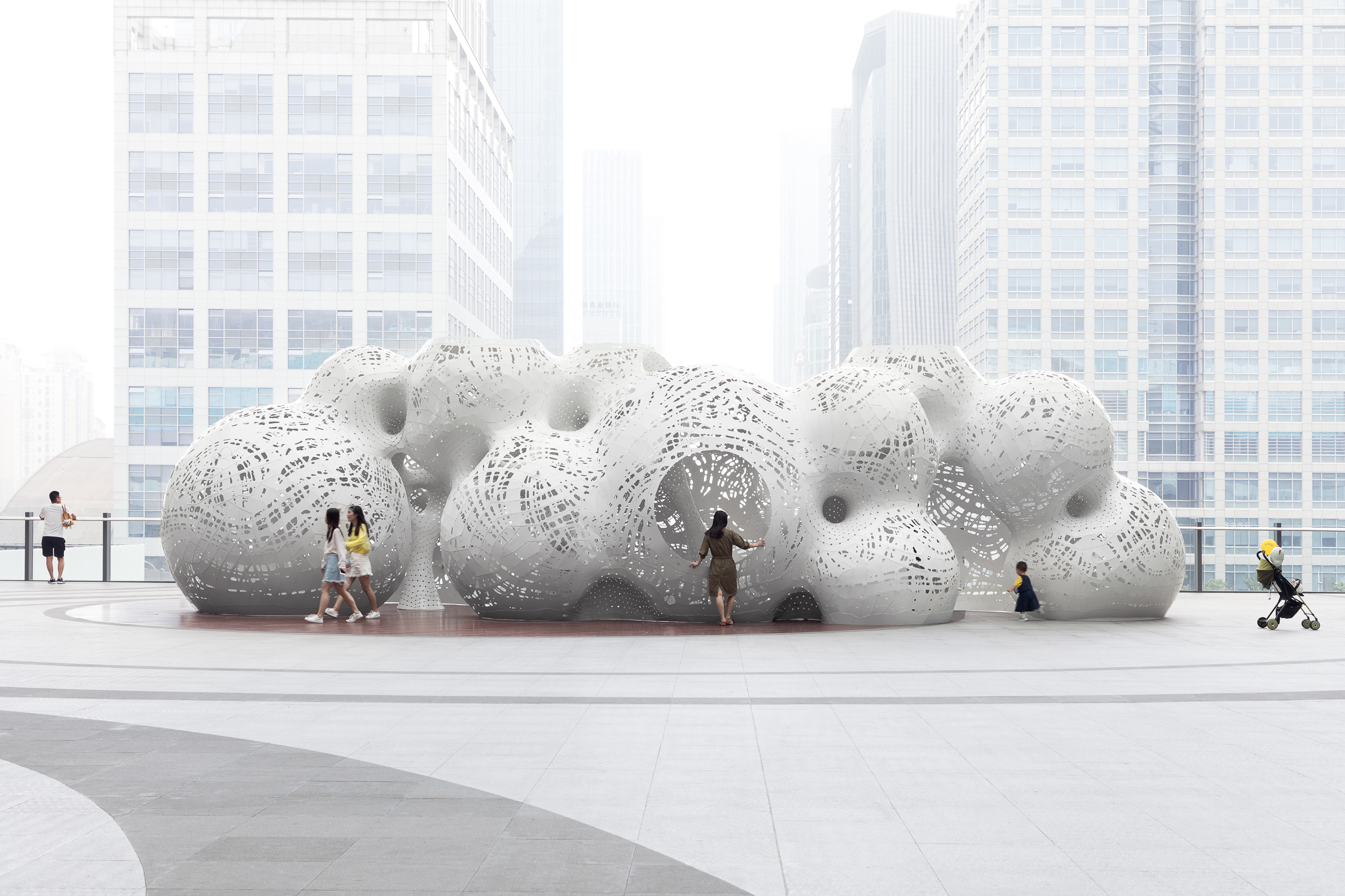
 Boolean Operator by MARC FORNES / THEVERYMANY, Suzhou, Jiangsu, China
Boolean Operator by MARC FORNES / THEVERYMANY, Suzhou, Jiangsu, China
Boolean Operator was an outdoor pavilion installed on the plaza of the commercial complex, Suzhou Center as part of the 2018 Jinji Lake Biennale. The pavilion appeared like a cluster of bubbles when looking from far away. Upon entering the pavilion, the intersections between the bubbles became a series of organic spaces to explore on people’s daily commuting routes. The aerial structure made of white-painted aluminium not only appealed to photographers but was welcomed by children playing hide and seek as well.

 The Plastic Museum by delavegacanolasso, Madrid, Spain
The Plastic Museum by delavegacanolasso, Madrid, Spain
The Plastic Museum educated visitors about the appropriate way to use plastic from an environmental perspective. The structure was entirely made of various types of recyclable plastic to meet the structural and natural lighting expectations. Transparent ribs invited lights and pedestrians’ sight in, creating interesting visual variations from day to night time together with the polyethylene façade. The prefabricated structure took only two days to assemble and one day to dismantle on the plaza by the Reina Sofia National Museum.
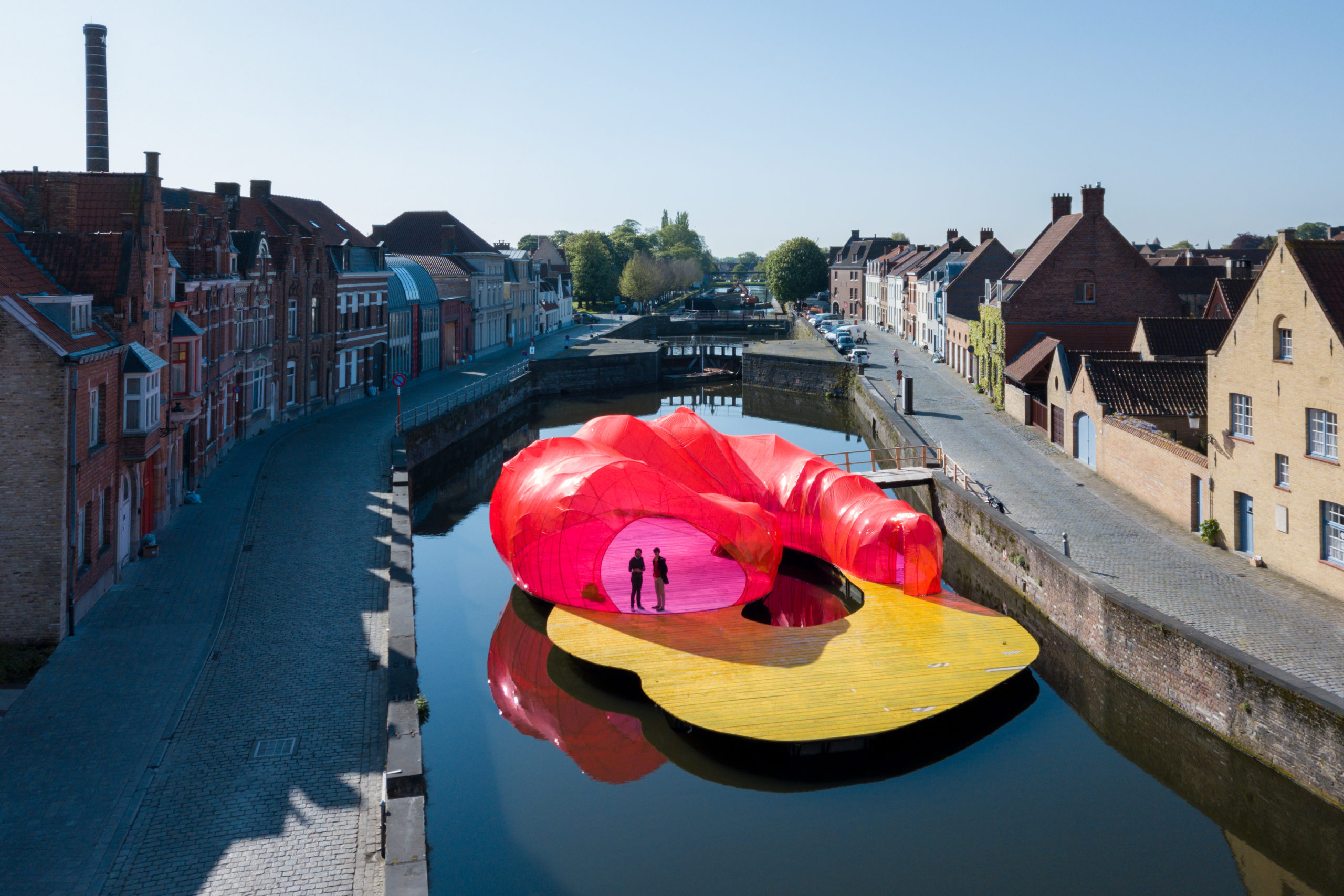
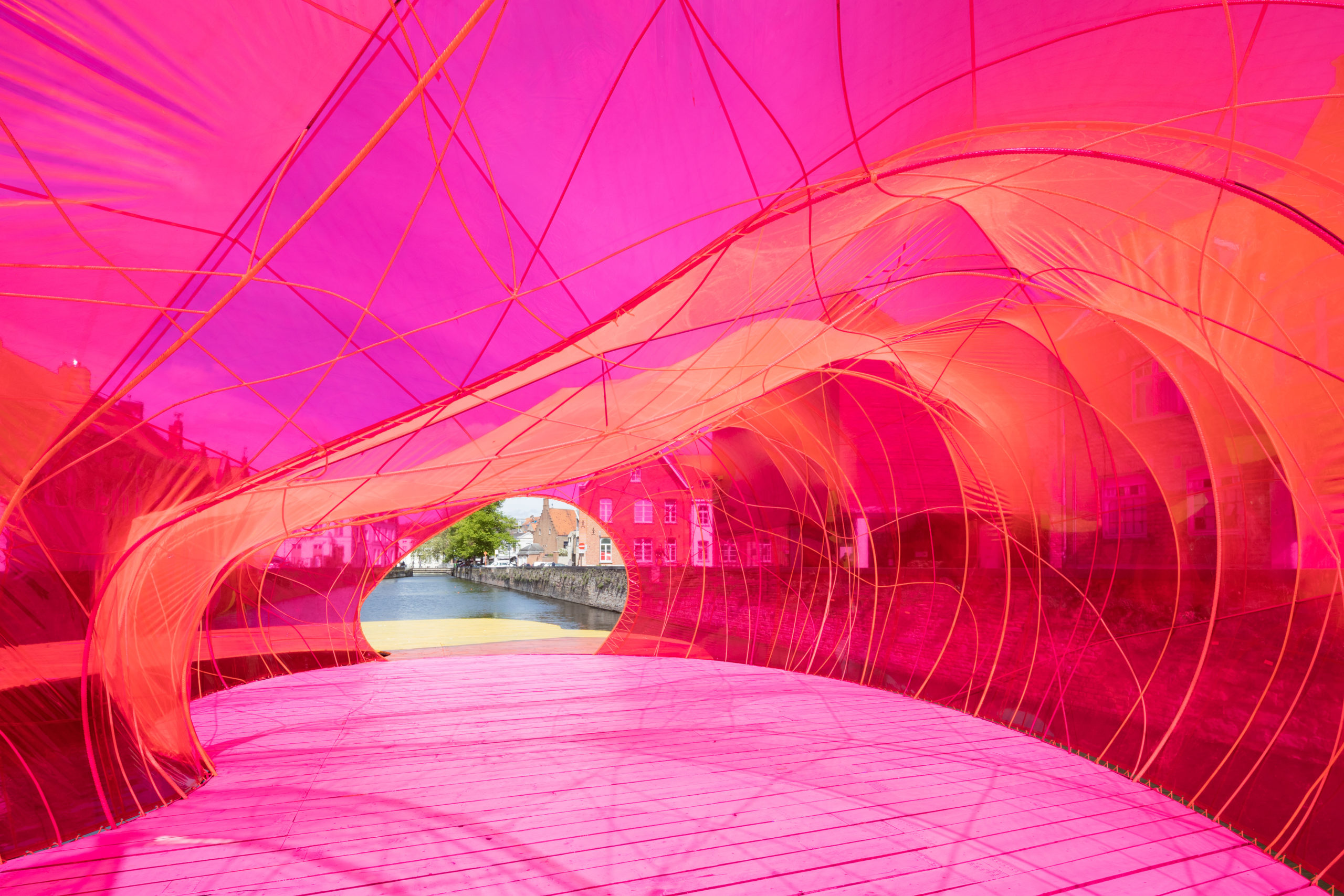 Brugge Pavilion by selgascano, Bruges, Belgium
Brugge Pavilion by selgascano, Bruges, Belgium
This floating pavilion, as part of the 2018 Brugge Triennale, served not only as a resting point for canal swimming but also a platform for community gatherings. The structure was innovative by using the uncommon material, vinyl as the covering over the steel ribs. The bright pink vinyl and the yellow deck visually contrasted with the brick building lining the canal banks, offering a fresh perspective from which to view the historic city of Bruges.
Architects: Want to have your project featured? Showcase your work through Architizer and sign up for our inspirational newsletters.






 Boolean Operator
Boolean Operator  Brugge Pavilion
Brugge Pavilion  Cloud Forests; Pavilion for Children’s Play
Cloud Forests; Pavilion for Children’s Play  CO2
CO2  Hy-Fi
Hy-Fi  Salvage Swings
Salvage Swings 
